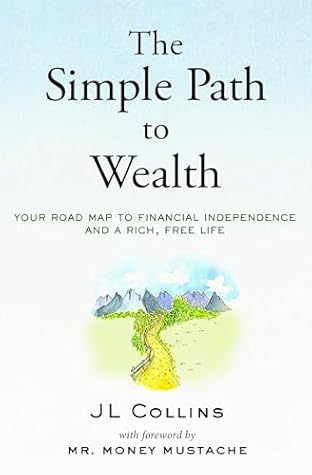More on this book
Community
Kindle Notes & Highlights
by
J.L. Collins
Read between
June 15 - July 1, 2025
keeping things as simple as you can.
If you choose to master it, money becomes a wonderful servant. If you don’t, it will surely master you.
Complex investment instruments exist only to profit those who create and sell them.
There are three key principles that have persisted from those letters, through the blog, and now in both editions of this book: 1. Spend less than you earn. 2. Invest the surplus. 3. Avoid debt.
the pursuit of financial independence has never been about retirement. I like working, and I’ve enjoyed my career. It’s been about having options. It’s been about being able to say no. It’s been about having “F-You Money” and the freedom it provides.
Three things saved us: 1. Our unwavering 50% savings rate. 2. Avoiding debt. We’ve never even had a car payment. 3. Finally embracing the indexing lessons Jack Bogle—the founder of the Vanguard Group and the inventor of index funds—perfected decades ago.
One of my very few regrets is that I spent far too much time worrying about how things might work out. It’s a huge waste, but it is a bit hardwired into me. Don’t do
the more debt you carry, the more of your income is devoured by interest payments.
If your interest rate is . . . • Less than 3%: Pay it off slowly and route the money to your investments instead. • Between 3% and 5%: Do whatever feels most comfortable. Either put the money to debt payment or investments. • More than 5%: Pay it off ASAP.
Pay the minimum required on all your debts, and then focus the rest of your available money on the one with the highest interest rate first.
your goal is financial independence, it is also to hold as little debt as possible. This means you’ll seek the least house to meet your needs rather than the most house you can technically afford.
Houses are an expensive indulgence, not an investment.
There are many things money can buy, but the most valuable of all is freedom—freedom to do what you want and to work for whom you respect.
I may not have owned a Mercedes, but I owned my freedom. Freedom to choose when to leave a job and freedom from worry when the choice wasn’t mine.
Money is a very relative thing.
Spend less than you earn—Invest the surplus—Avoid debt.
The lines between need and want are continually and intentionally blurred.
Stop thinking about what your money can buy. Start thinking about what your money can earn. And then think about what the money it earns can earn.
Warren Buffett is rather famously quoted as saying the following: Rule #1: Never lose money. Rule #2: Never forget rule #1.
If I were to seek absolute security (a very different thing than the smooth ride most mistake for safety), I’d hold 100% in VTSAX and spend only the ~1.25% dividend it throws off.
Since we can’t predict these swings, we need to toughen up mentally and ride them out.
fear and greed, the two major emotions that drive investors.
successful investing is, by definition, long-term. Any investing done short-term is, by definition, speculation.
to play this market-timing game well even once, you need to be right twice: First, you need to call the high. Then you need to call the low. And you must be able to do this repeatedly.
Market timing is an unwinnable game over time.
“Those who would trade liberty for security deserve neither.”
Market crashes are to be expected.
The market always recovers. Always. And if someday it really doesn’t, no investment will be safe, and none of this financial stuff will matter anyway.
The market always goes up.
The market is the single best-performing investment class over time, bar none.
The next ten, twenty, thirty, forty, fifty years will have just as many collapses, recessions, and disasters as in the past.
you have to toughen up, learn to ignore the noise, and ride out the storm,
“We’ve stayed the course, with a side dish of panic.”
Through disaster after disaster, the market always makes its way higher over time.
Stocks are not just little slips of traded paper. When you own stock, you own a piece of a business.
Most people lose money in the stock market.
let index funds do the heavy lifting in my portfolio.
there are actually more mutual funds out there than there are stocks.
7% of funds fail each year.
83% of equity funds failed to outperform the unmanaged index. But 100% of them charged their clients high fees to try.
“Past performance is no guarantee of future results.” It is the most ignored sentence in the whole document. It is also the most accurate.
while some funds might look good in the short term, most do worse than the index over longer periods.
the vast majority of active traders underperform the market, but the more frequently they trade, the worse they do.
There’s a lot of money to be made with actively managed funds. Just not by the investors.
Nobody is going to sit glued to their TV while some rational person talks about long-term investing.
Never buy stocks on margin.
a crash at the beginning of your investing life is a gift.
In a deflationary environment, delayed buying decisions are rewarded.
during periods of inflation, anything you want to buy will cost more tomorrow than today.
But the simple truth is this: The more complex an investment, the less likely it is to be profitable.


